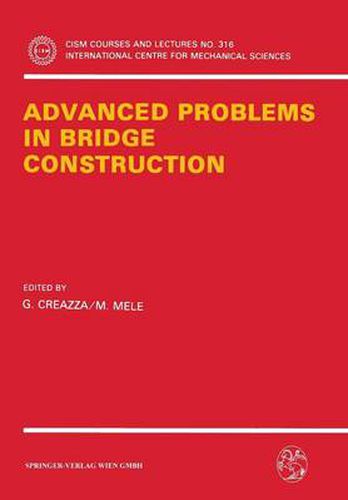Readings Newsletter
Become a Readings Member to make your shopping experience even easier.
Sign in or sign up for free!
You’re not far away from qualifying for FREE standard shipping within Australia
You’ve qualified for FREE standard shipping within Australia
The cart is loading…






This title is printed to order. This book may have been self-published. If so, we cannot guarantee the quality of the content. In the main most books will have gone through the editing process however some may not. We therefore suggest that you be aware of this before ordering this book. If in doubt check either the author or publisher’s details as we are unable to accept any returns unless they are faulty. Please contact us if you have any questions.
This volume deals with the most modern and topical problems of bridge design. The topics presented allow to tackle both theoretical-analytical as well as technical-constructive aspects of the design problem, pointing out how in the case of bridges, specifically for long span bridges, the two aspects are absolutely inseparable. In modern bridges, reasons of technical and economic feasibility oblige an extreme parceling of the construction process, with the consequent need to revise, with respect to the past, both design concepts as well as the theoretical apparatus of analysis that governs it. All this can clearly be derived from reading the present volume, in which the different contributions stress theoretical and technical questions of particular interest and topicality, without claiming to approach them systematically, but offering clear procedural rules and trend indications. With reference to the theoretical approach, some of particular importance are reviewed, such as the possibility of using limit analysis, the simplification of the design process for bridges, durability, and computer aided design. For what concerns the bridge typologies and the corresponding constructive problems, the emphasis is mostly on the ones still in an evolutionary phase, that is long span suspended/stayed bridges and cantilever built bridges with prefabricated segments.
$9.00 standard shipping within Australia
FREE standard shipping within Australia for orders over $100.00
Express & International shipping calculated at checkout
This title is printed to order. This book may have been self-published. If so, we cannot guarantee the quality of the content. In the main most books will have gone through the editing process however some may not. We therefore suggest that you be aware of this before ordering this book. If in doubt check either the author or publisher’s details as we are unable to accept any returns unless they are faulty. Please contact us if you have any questions.
This volume deals with the most modern and topical problems of bridge design. The topics presented allow to tackle both theoretical-analytical as well as technical-constructive aspects of the design problem, pointing out how in the case of bridges, specifically for long span bridges, the two aspects are absolutely inseparable. In modern bridges, reasons of technical and economic feasibility oblige an extreme parceling of the construction process, with the consequent need to revise, with respect to the past, both design concepts as well as the theoretical apparatus of analysis that governs it. All this can clearly be derived from reading the present volume, in which the different contributions stress theoretical and technical questions of particular interest and topicality, without claiming to approach them systematically, but offering clear procedural rules and trend indications. With reference to the theoretical approach, some of particular importance are reviewed, such as the possibility of using limit analysis, the simplification of the design process for bridges, durability, and computer aided design. For what concerns the bridge typologies and the corresponding constructive problems, the emphasis is mostly on the ones still in an evolutionary phase, that is long span suspended/stayed bridges and cantilever built bridges with prefabricated segments.